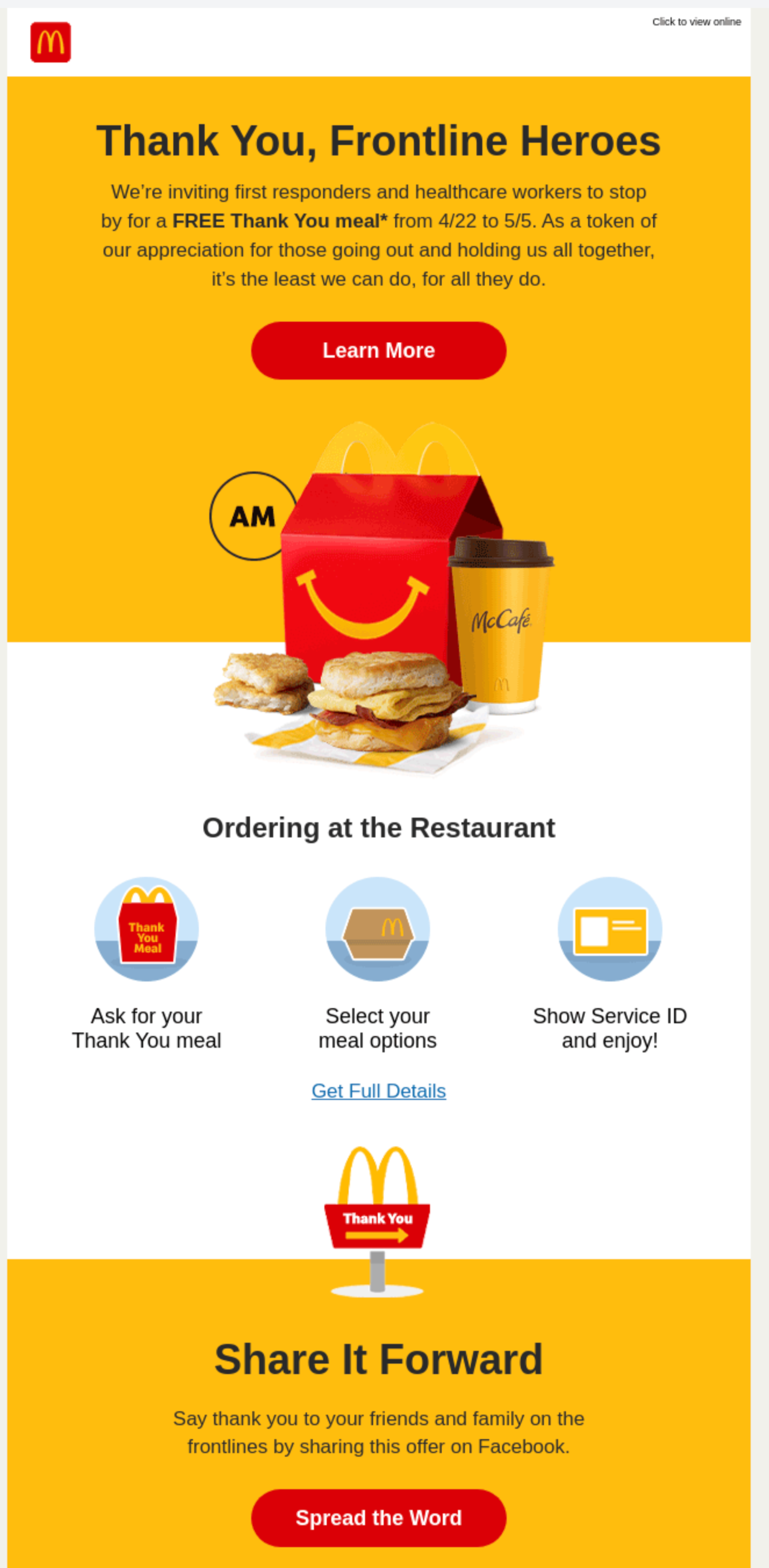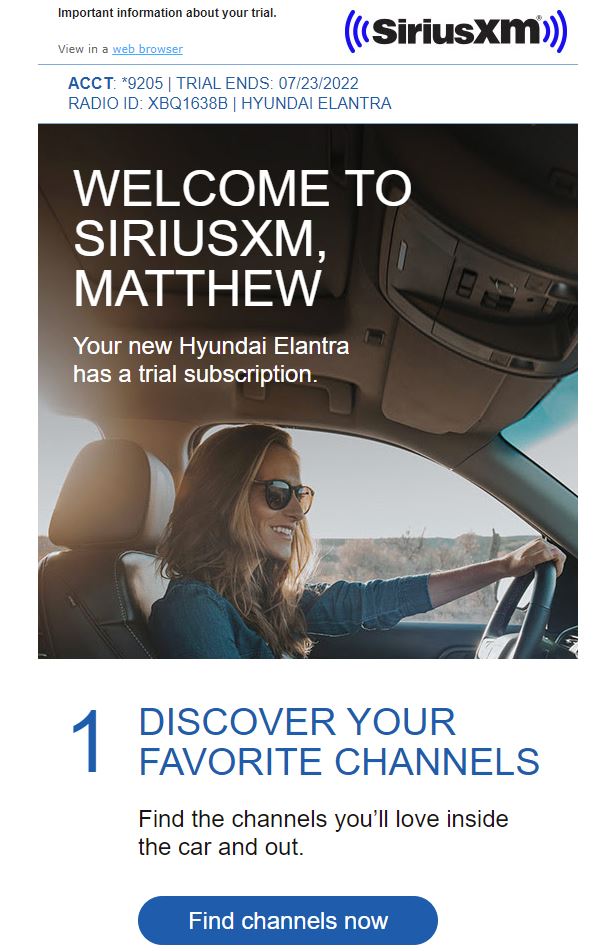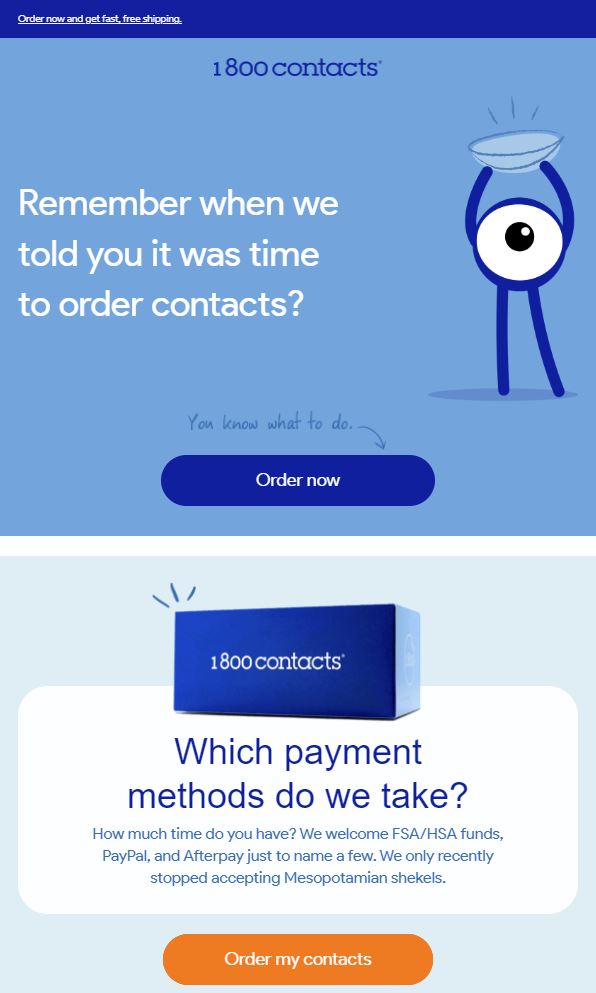Gone are the days where consumers focus on just your product or brand. As much as we’d all love to be on our customers’ minds all the time, they have lives of their own with needs to fulfill.
As a result, marketing is now a matter of reaching someone in the right context. This is known as contextual messaging—a set of components and techniques designed to deliver individualized marketing at key, relevant moments, fitting each customer’s needs.
To get it right, however, your marketing team needs to incorporate what you know about the customer—data you’ve collected—and what you know about the state of affairs in the world—the news, social feeds, etc. With these two data sets in place, your messaging can reach customers in a way that has a direct impact on their lives. Here are a few examples of successful contextualized messaging to inspire your campaigns.
Contextualized Messaging in Action
To start, brands should identify their personas or segments and the specific information related to their demographics, pain points, buying goals, preferences, and objections. With the right tools, this personalized information becomes the cornerstone for understanding where your audience stands in their buying journey, and what kind of content will best speak to them and when.
Stay Relevant
Demographics help drive deeper engagement with a specific portion of your audience, and become even more effective when aligned with real world context. In 2020, McDonald’s, the fast food chain, served up a special promotion for first responders and health care workers on the front lines of the coronavirus pandemic.
As a thank you for their work, frontline employees—who presented their service IDs—were offered the opportunity to enjoy a free meal. The advertising for this token of appreciation came in the form of personalized emails, with a CTA encouraging subscribers—whether they’re frontline employees or not—to spread the word of the special event on social media.


McDonald’s sent this email to frontline workers during the pandemic, knowing that they could appreciate a free meal after working long hours. Source: ReallyGoodEmails
Recognizing your customers for their efforts in a relevant manner is a surefire way to earn their loyalty. Here, McDonald’s understood that a portion of their audience—frontline workers— were in the midst of an exceptionally difficult time. The company acknowledged the best way they could help, and empowered their audience beyond the intended demographic to make the most of the promotion. When tapping into demographic context, it’s important to simultaneously avoid alienating the rest of your audience. McDonald’s does well to balance product offering, demographic data, and contextualization here.
Use Customer Data
Sometimes, a brand’s relevance with consumers can be congruent with another product or brand altogether. Here, Sirius XM, the satellite radio service, was quick to send a new customer a welcome email which referenced the recent purchase of a new vehicle that comes with a three-month trial of their service.
A series of emails were sent promoting their mobile app, as well as an additional promotion offering an extended trial at a discounted price. The purpose of the welcome message was clear, indicating that they would like the new user to transition into becoming a full-time customer. But, what really made the messaging effective was its timing—coming just days after the new car owner had time to explore and enjoy the service for themselves.


Knowing which vehicles their service was packaged with, SiriusXM gets the jump on new customers with this welcome message.
The relevance, timing and call-to-action here make for a very effective set of contextualized messages. Sirius does a great job of not only getting their foot in the door, but taking actionable steps towards creating repeat business by helping the trial user get the most out of their new service. When reaching out to new customers, it can pay off to understand how they came to find your brand or service, and use that to hone in on further personalization.
Keep Seasonality in Mind
Seasonality is the perfect example of contextualized messaging. In certain contexts, like a summer month, for example, featuring a winter jacket in a promotional email wouldn’t make any sense, but featuring a bathing suit would.
The apparel company, Iron and Resin, suggested items related to the time of the year. In, what we can only assume is a post-holiday email (based on the “Holiday Hangover Sale” option in the top navigation), Iron and Resin focused on advertising their “warmest” jacket. While also touting the jacket’s versatility, Iron and Resin chose to feature this product because it aligns with the time of the year. It’s cold, so why not feature a jacket that keeps customers warm?


Iron and Resin provides a seasonal contextualized message, offering customers their warmest product in the coldest months. Source: ReallyGoodEmails.
You can layer more than your outerwear. In fact, you can layer your contextualized messages. By using seasonality and customer data, you could send customers an email, during winter, with jackets they’ve been browsing.Tack on a coupon for 15% off and, with the right contextualized messaging, you could have yourself a sale! Remember, contextualized messaging is all about being in the right place at the right time.
Help Your Customers
In a different display of leveraging previous purchase information, 1-800 Contacts, the online contact lens retailer, determines when their customers are due to refill their prescriptions based on how many contacts they previously purchased. For someone who may or may not be aware that they need to re-up their supply, this email would serve as a much-needed reminder and, as a result, encourage customer action.


1-800 Contacts notifies a customer of the upcoming renewal for their prescription with this timely reminder.
For businesses that are centered on subscription-based models, timing becomes especially relevant to retention. 1-800 Contacts understands the importance of their product and knows when to nudge customers towards a refill when they need it most. Aim to keep your customer’s best interests in mind and you’ll win their loyalty along the way.
Be Competitive Through Context
As markets become more competitive, so too must marketers. In most cases, contextual messaging requires an investment in strong data—but the benefits are numerous. From increased customer engagement to higher recurring revenue, defining your buyer personas and segmenting your customers for personalized outreach becomes one of the top ways to reach your audience and earn their loyalty.
Ultimately, the goal for these campaigns is about keeping your customers coming back for more. But the brands that do it well, and make it stick, are those who are speaking to customer interests, help solve problems, and further cement customer loyalty through a personalized message.
To learn how to build out your martech stack for contextualized messages, schedule a demo today.
































